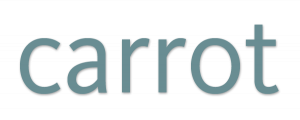 I went along to a Periscopix (a client) and Google event this week, to learn more about the converging world of search and social. I came away really fired up about the possibilities of Google+, and convinced about its importance to communicators. The whole event was (of course) streamed on Google+, and a recording available on YouTube – it’s well worth watching (the detailed G+ overview starts at around 13 minutes).
I went along to a Periscopix (a client) and Google event this week, to learn more about the converging world of search and social. I came away really fired up about the possibilities of Google+, and convinced about its importance to communicators. The whole event was (of course) streamed on Google+, and a recording available on YouTube – it’s well worth watching (the detailed G+ overview starts at around 13 minutes).
(The second part of the video deals with YouTube, particularly PPC, and some really interesting changes in Google Analytics – things like tracking consumers across different devices – which are also worth knowing about. Topics for another day…)
The possibilities for companies on Google+ are amazing, and to be honest, I hadn’t really thought about a lot of it before. If you link G+ to your AdWords, it can increase click through rates. When you search for information or a company, you’ll get personalised results showing you how many people have +1’d a link, or even who within your own social network has +1’d it. Google+ will pull together all the +1s from a brand’s G+ page, blog, website, even advert, which make the influence of +1s even more powerful.
Like a lot of companies I suspect, we’ve completely neglected our Carrot Google+ page over the last few months, other than posting some (whisper) duplicate content on it, and I hadn’t posted on my personal page for months. But I came away determined To Do Better. If you’re like us, here are a few things that might help get you started.
- Create a Google+ page for your company and create original, not duplicate, content
- Build a list of followers / people to follow in the way you would on Twitter or Facebook, and use circles to only show relevant content to each
- Verify your brand page. You’ll need to have linked your website and your G+ page: fill in the ‘about us’ section of your Google+ page, and add a bit of code (which you’ll find on the verification instructions) to your website home page. You can only do this when you have a ‘meaningful’ number of followers, although I’m not clear what a meaningful number is yet
- Add +1 buttons to all your web content (I guess this is particularly relevant for blog posts and videos)
- If you create videos and have a company YouTube account (if you don’t, get one – another action for Carrot in the coming months), link it to your Google+ account
The really important thing, though, is to create compelling content that people want to +1. If this new world is powered by personal recommendations from within your network, you need to create content that people want to recommend to their friends. It seems to me to be more specific that Facebook’s ‘like’ button – and of course, it has an impact on your search results, which arguably makes it more important. This is search based on trust and recommendation. Say you’re looking for a holiday to Italy, and you Google ‘reviews of holidays to Italy’. You might get four results from media sites reviewing holidays to Italy. Only one of them has been +1’d by three of your friends, whom you trust. You’d be far more likely not just to click through, but to buy from the recommendation of that site. (An interesting side fact: consumers search 20 times before buying travel. Twenty.)
There were other, exciting things that got my brain working, particularly Google+ events and hangouts (if anyone hasn’t seen the Obama hangout, watch it – it’s amazing). You can stream hashtagged content from Twitter on G+, live-stream events, create hangouts to extend their audience (public or invitees), and record the event on YouTube. Or you can just watch a video on YouTube with 10 friends, by inviting them to a hangout. All this content can be shared and +1’d, and all this will make your company more visible.
The eureka moment for me – I may be a bit slow on this – was the realisation of what the name Google+ signifies. This is a world of convergence between Google plus everything social; a place where the worlds of content, ads, search results, personal recommendations, endorsements, blog posts, video, analytics, local information – you name it – comes together to create a personalised online world, based around human relationships and networks.
The lines between the things that we traditionally break into separate activities are blurring. Luckily for our industry, it all seems to start with great content.







2 Comments. Leave new
Great piece – very interesting and something the PR industry needs to wake up to.
I’m slowly getting my head round a lof of this too. But setting up a Google+ page for a company requires a Gmail account and from what I’ve experienced so far this needs to be done in one individuals name, and then you link the G+ pages etc.
Doesn’t this create a problem for a company in that it risks having its social capital invested in one person, and should that person leave they will have a problem.
How have you seen people getting round that? Or have I simply misunderstood something?
Thanks Sean and glad it was interesting.
You’re right that you have to have a personal gmail/Google+ account to manage or set up a company page. Once it’s set up, the original person retains ‘ownership’ of the page, but you can assign different people to manage it (Google introduced this some time after launch). If the original ‘owner’ leaves, you can transfer ownership of the page to another of the page managers, as long as they’ve been a manager of the page for at least 2 weeks. The key thing is not to have just one person owning and managing the page. It’s not ideal, but it is a work-around.